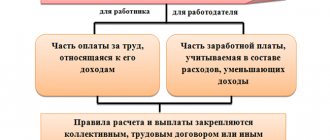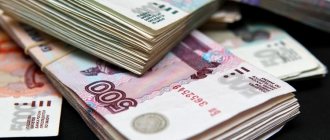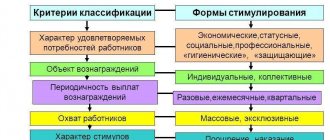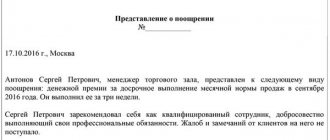Dividends are represented by some part of the organization's profit, which remains in the company after paying all mandatory payments and taxes. They are transferred only to owners of shares of the enterprise. Profit is distributed among shareholders depending on the available share in the capital. The calculation of dividends should be carried out by an experienced accountant so that there are no errors leading to regular audits by the tax inspectorate. It is important not only to correctly determine the amount of payments, but also to transfer funds within a strictly established time frame.
How are dividends paid?
When calculating these payments, companies take into account certain requirements. These include:
- dividends can be paid not only in cash, but also in the form of property;
- LLC participants or individuals receive money through the cash desk or bank account of the enterprise.
Each company independently determines the methods by which dividends will be issued. The basic rules are enshrined in the constituent documentation of the enterprise.
How are dividends calculated?
At the end of each financial year, the organization must prepare annual reports. If, based on the results of work, there remains undistributed profit, then it can be used for accumulation, development of the company, or distribution among shareholders. In the latter case, dividends are calculated, after which they are transferred to the participants of the company.
When organizing a legal entity, all founders invest their funds or property in the authorized capital. Based on this action, a certain share in the company is formed. Payments are calculated in accordance with this share. Other features of calculating dividends on shares:
- Only the profit remaining after paying taxes and other obligatory payments is distributed;
- funds can be transferred annually, semi-annually or quarterly;
- the company's charter specifies the terms and procedure for payment of funds;
- Most often, companies pay dividends at the end of the year.
There are certain situations in which it is not advisable to pay funds even if there is a positive result from the company’s work.
Legal restrictions
There are no direct legal restrictions on payments in different reporting periods. Those. Interim dividends can be paid several times a year, but subject to certain rules.
However, other cases may arise when interim or annual dividends cannot be paid for other reasons, which I will discuss in detail below.
Taxation of dividends and other payments
Interim dividends and other payments are taxed at a rate of 13%. For foreign participants this rate is 15%.
When divas are paid, the tax agent immediately transfers the necessary funds to the Federal Tax Service, so the individual receives payments already “cleared” of taxes.
Let me give you a simple example. There is a share X, it costs 100 rubles. The dividend is paid 2 times a year. Accrual periods: 1st quarter (interim dividend for the reporting 3 months) and payment for the year (accruals for 12 months). The first dividend is 5 rubles, for the second period 5 rubles are also paid. The final nominal amount of dividend payments for the year will be equal to 10 rubles.
Those. The nominal return for the year will be (10/100) * 100% = 10%.
But the real return, taking into account taxes paid, will be (10/100) * 100% * 0.87 = 8.7 rubles or 8.7% per year.
Interim dividends and insurance premiums
Insurance premiums will not be charged either when interim dividends are paid or when annual dividends are paid.
Insurance premiums are recognized exclusively in cases of labor relations or civil agreements, the meaning of which is to perform work or services for a certain fee and within a specified time frame.
When an investor buys a security or the right to own part of a joint stock company, which is equivalent in meaning, the civil law relations described above do not arise.
In very simple words, insurance premiums are paid from wages, but are not subject to deduction from dividends.
Frequency of dividend payments
In accordance with the legislation on joint stock companies, the issuer may pay interim dividends for the following periods:
- quarter;
- half year;
- nine month;
- year.
How to calculate dividend payments
The amount of accruals can be assumed relative to the dividend policy set by the issuers themselves. This is an optional measure, but many people use it to improve the attractiveness of their securities.
Everything is simple here. For example, an organization has established a standard for div. policy of 50%. Those. when you earn 100 rubles. the total amount of payments will be 50 rubles, and if the company has 100 shares in circulation, then 50/100 = 0.5 rubles will be paid for each security.
Now for a real and slightly more complex example, in which I will show how interim and annual dividends were paid in the mining industry for 2020.
Let me make a reservation right away that the issuer adheres to the procedure for calculating semi-annual dividends, which are formally paid not from profits, but are tied to EBITDA for the reporting period. However, the legal basis for payments is still recognized as the profit of the company.
As a result, in 2020, 1 interim dividend and 1 annual dividend were paid. They are shown in the table below:
| Accrual period | Total amount of dividends, billion rubles. | Dividend per share, rub. | Company profit (PE) for the period, billion rubles. | % of emergency | EBITDA for the period, billion rubles. | % of EBITDA |
| For 2020 | 125, 45 | 792,52 | 98,0 | 128% | 182,6 | 68,7% |
| In 6 months 2020 | 122, 8 | 776,02 | 91,5 | 134,2% | 206,5 | 59,5% |
The issuer has 158,245,476 ordinary shares in circulation. As a result, 248.25 billion rubles were paid for the current year, which is 1568.54 rubles. per one ordinary share.
Risks associated with the payment of interim dividends
There are cases when a company pays interim dividends to shareholders for a quarter, half a year or 9 months, but after that an annual loss is recorded. In this case, there is a risk that this accounting entry will lead to an increase in accrued tax costs.
This problem can be solved quite simply. When interim dividends are paid, an organization may indicate that the calculation base is not current income, but “retained earnings.” Then the question disappears, no additional taxes or contributions have to be paid.
From an accounting perspective, this process is described below.
Is it possible to pay dividends for previous years?
Yes, and this is an absolutely normal practice that occurs in many organizations. Dividend accruals can be paid not only from current profits, but also from income from previous years.
And even more, there are special securities for which, in cases of losses in the current period, according to the company’s inability to pay the dividends specified in div. policy, obligations to distribute profits for this period are preserved and transferred to the income of future years or reserve funds previously formed for these purposes.
For example, such securities are cumulative preferred shares.
When are dividends not paid?
It is not always advisable for a company to transfer dividends to its shareholders even if there is profit from operations during the year. All situations when a company cannot carry out this process are listed in Federal Law No. 14. Such cases include:
- the director, who is also the founder, according to official documents, has a salary that is too low, so the tax inspectorate may consider that dividends under such conditions act as payment for his work, which often leads to additional assessments of contributions and bringing the organization to administrative liability;
- the company distributes the remaining profit on a monthly basis among the employees of the enterprise, who are also its founders, although according to the law, LLCs and JSCs can perform this process no more than once a quarter, therefore, through the court, the Federal Tax Service can insist on the reclassification of payments;
- Dividends are paid during the year, but according to the final annual report the company has a negative balance sheet, so unrecorded profits are distributed, so the funds paid will be transferred to net profit, which will lead to the accrual of additional contributions and taxes;
- funds are paid to shareholders without taking into account the share that belongs to them in the company, therefore employees of the Federal Tax Service recognize such amounts as excess and will make additional contributions.
It is advisable to calculate dividends during the year from profits received in the previous period, and not the current one.
What are dividends?
Dividends are a way of receiving investment income based on the results of the issuing enterprise’s activities for a certain period. The concept of “dividends” in joint-stock companies means the distribution of a certain part of the net profit among shareholders in relation to the number and type of securities. What are dividends in simple words? This is the investor’s income received as a result of the work of the company whose assets he acquired.
The law does not oblige joint stock companies to pay dividends. This is just one of the opportunities to manage the organization's profits.
Dividends as a way to earn money
Understanding what stock dividends are helps create permanent passive income for their owners. To determine whether you can live only on dividends, you are guided by 2 main factors:
- Monthly expenses of the investor.
Everyone has their own cost of living and personal mandatory expenses per month.
- Portfolio return.
This value shows the percentage ratio of the dividend per 1 share to its price on the market for the period taken for payment. The average return on securities of Russian issuers is 8-9%.
Example: a conditional investor spends about 40,000 rubles per month, therefore, approximately 480,000 per year. To maintain this standard of living, he will have to invest about RUB 5,300,000 in his portfolio. from a profitability forecast of 9%.
The example shows a basic calculation without taking into account inflation risks, taxes and other expenses associated with owning securities.
To receive interest income, an investor should carefully assemble his portfolio. Those who want to receive regular dividends should familiarize themselves with the following information:
- Analysis of the overall financial position of the organization.
All this information is public: the company’s statements, the number of shares issued, profits for previous periods, previously paid dividends.
- Studying the Charter of the company and the rules for calculating interest to owners.
- Use of third-party analytics and statistics collection tools, including on independent websites.
- The principle of “different baskets”. You should not invest your main capital in the purchase of securities of only one issuer.
Important: risk is a constant factor that is inherent in any investment project.
When investing in stocks in anticipation of dividend payments, you cannot focus only on their high yield. As a rule, inflated indicators for this parameter are a sign of attracting investors. After time, it may turn out that the owner of the securities is in the red due to the fall in the value of the asset itself over time, and the interest received does not cover the holder’s losses.
Payment sources
To pay these funds, companies can use different sources, which include current profits and profits received in previous years of operation. For this purpose, the profit received after payment of all obligatory payments and taxes is used.
When calculating dividends to founders, several parameters are taken into account:
- When making calculations, JSCs must be guided by the indications available in their financial statements, and for LLCs there is no such strict requirement;
- the most important thing for calculations is to use the profit received in previous years of work, and there are no restrictions on the period when such profit should appear;
- funds are paid solely on the basis of a decision made by shareholders at a meeting.
Funds can be transferred in cash through the company's cash desk, but the non-cash method is most often used.
Rules for processing payments
The calculation and payment of dividends are carried out solely on the basis of the minutes of the meeting, where shareholders decide on the need to pay these funds. For this purpose a general meeting is held. By voting, a decision is made on how retained earnings will be used. To do this, shareholders can distribute it as dividends.
The results of the meeting must be officially recorded, for which a protocol is drawn up. Often a company has only one participant, so he draws up a decision in any form on the basis of which he pays dividends to himself.
Within 10 days after the formation of the protocol, a copy of it is sent to all participants in the enterprise. It must contain information:
- indicates the type of meeting, which can be extraordinary or regular;
- it is stated in what form it was held, since on many issues an absentee meeting is held when the participants of the enterprise do not appear to vote;
- communications by shareholders may be sent in a variety of ways, such as by telephone, Internet or other methods;
- the decision to transfer interim payments is made only if a quorum is present, therefore a correctly made decision by the participants is required;
- shareholders are allowed to attract representatives, which must be indicated in the minutes;
- the participant who is the chairman of the meeting is registered;
- the issues that were discussed at the meeting are formulated, and 15 days before the scheduled event, any shareholder can raise additional issues of interest to him;
- all items on the agenda are listed;
- the fact of the decision being made by a notary is confirmed, although the law provides for the possibility of using another method of confirmation, prescribed in the charter of the enterprise.
If necessary, other issues may be specified in the protocol.
Payment term
The period for paying dividends depends on the legal form of the organization - LLC or JSC. For joint stock companies, the payment period depends on the status of the shareholders, as well as the moment when these recipients were identified.
| Legal organizational form of organization | Recipient status | Dividend payment period | Base |
| Limited Liability Company | Participant, founder | No later than 60 days from the date on which the relevant decision was made. A shorter period can be established in the company's charter | Clause 3 of Article 28 of the Law of February 8, 1998 No. 14-FZ |
| Joint-Stock Company | Registered in the register of shareholders:
| No more than 10 working days from the moment the recipients are determined. AO recipients can be determined no earlier than 10 and no later than 20 days from the moment the decision on payment is made. A shorter payment period can be established in the company’s charter | Clauses 3, 5 and 6 of Article 42 of the Law of December 26, 1995 No. 208-FZ. |
| Other dividend recipients | No later than 25 working days from the moment the recipients are determined. AO recipients can be determined no earlier than 10 and no later than 20 days from the moment the decision on payment is made. A shorter payment period can be established in the company’s charter |
Settlement for ordinary shares
Such securities are considered the most popular among participants in various organizations. The formula for calculating dividends on such shares is as follows:
Dividends paid last year / cost of securities * 100%.
Additionally, a formula that takes into account dividend yield can be applied. In this case, the following formula is used:
Dividend yield = dividends for common shares / their market price * 100%.
When calculating dividend income, firms must consider certain rules:
- You should first check whether all the requirements listed in the company’s regulatory documents have been met;
- it is important to check whether there are any restrictions on payments;
- when making calculations, it is additionally recommended to use adjustment factors, the amount of which is established by the board of directors;
- When calculating payments on ordinary shares, their average is often forecast, after which the current amount is established.
When making calculations, it is taken into account that the payment of dividends cannot act as a way of developing the company. Large deductions are allowed only for long-running and well-developed enterprises, so there is no urgent need to allocate funds for development.
It makes more sense for young companies to use money to further expand their activities.
Dividends. We take into account the features
Dividends are a great way for investors to see a steady stream of income from their investments. While the world of dividend investing may seem conservative, there are nuances and must-have information that an investor can learn to create long-term assets.
What are dividends
Dividends are part of the company's earnings that its owners receive. By purchasing even one share, an investor actually becomes a co-owner of the business. The company distributes the profit received among the owners depending on the number of their shares. Therefore, we often talk about the amount of dividends per share.
Investors often have questions about the size of dividends, how long to wait for them, and what they should know to grow their income. The topic of dividends is simple, but it is worth studying it consistently. Let's consider the entire path of dividends: from the source to the moment where they can be spent.
Source of dividends - share
So, a share gives you a share in the business and the right to a portion of the profits. In general, this is its essence. You can buy shares and other securities on the stock exchange - an electronic trading platform. The broker gives you access to it by opening an account for you in the office or remotely.
It is important to know that a company is not required to pay dividends, especially if there are no profits. The exception is an entry in the charter. Please note that there are companies, including large ones, that do not pay dividends at all.
It also happens the other way around: when the top management of a company can decide to pay dividends from retained earnings from previous years or even by taking out a loan.
The difference between investments on the stock exchange and traditional banking products is that the value of securities is constantly changing. The share price depends on the financial position of the company, expectations of future results, supply and demand for the stock.
Privileged or ordinary
The situations regarding ordinary shares were discussed above. If payment of dividends is not required for them, then for preferred ones, part of the profit received should always go to dividends. The nuance is that such shares do not give voting rights in the company. Not all companies issue both types of shares.
Choosing stocks
First, we will determine a list of companies that consistently pay dividends and conduct business successfully. There are more such companies than you might think. The step-by-step action plan is as follows:
— Open the dividend calendar;
— We study the dividend history (goal: find a company with stable payout dynamics);
— Get acquainted with the dividend policy (on what conditions the size of dividends depends);
— We evaluate the company’s financial results.
The dividend policy is usually published on the company's website. Often dividends are a certain percentage of net profit, but can also be tied to other indicators.
Of course, you don’t have to read the company’s dividend policy, but simply wait for the dividend amount to be announced. However, understanding the financial results and dividend policy together allows us to predict the size of dividends in advance.
We buy shares and receive dividends
After choosing the securities, you can think about buying shares, but don’t rush. You definitely need to figure out when and within what time frame the company pays dividends.
First, the board of directors makes recommendations: determines the amount of dividends and the so-called dividend cut-off date . It is also called the closing date of the shareholder register. To qualify for dividends, you must own the shares on that date. Then voting takes place at the general meeting of shareholders. Its results are published on the company’s website and other sources. For example, on the issuer’s page in the Corporate Information Disclosure Center: e-disclosure.ru
Let's give an example from practice and calculate the dividend yield:
On October 18, 2020, Magnit announced the payment of dividends for the last 9 months of operation. This was announced on the Disclosure Center website:
“In accordance with the recommendations, it is proposed to pay dividends on ordinary registered shares of PJSC Magnit in the amount of RUB 15,000,332,342.45. (Fifteen billion three hundred thirty-two thousand three hundred forty-two rubles 45 kopecks), which is 147.19 rubles. (One hundred forty-seven rubles 19 kopecks) per one ordinary share.”
The price of 1 share at that time was about 3,600 rubles. Accordingly, the dividend yield if purchased at this price would be (147.19 / 3600) * 100 = 4.09%.
Dividend season in the Russian Federation Companies pay dividends at different intervals: once a quarter, half a year, once a year. In this case, the payment period may vary, but most often in Russia this happens at the end of the year. This time is usually called “Dividend season”.
The first stream of dividend recommendations comes in March, the last at the end of May. Closing dates for most registers fall between the end of April and the second half of July. Often companies follow established guidelines and choose to set cutoffs on the same dates as in previous years.
The peak of the dividend season is the period from the second half of June to mid-July. At this time, the registers of many large Russian companies are closed.
We take into account the features:
When to buy stocks to get dividends
On the day of purchase, shares are not credited to the investor's account. Typically, crediting to the account occurs on the second business day with the opening of trading on the exchange at 10:00 Moscow time. At the same moment, funds for securities are written off. Thus, to receive dividends, shares must be purchased 2 trading days before the register cut-off date.
In our case with Magnit, the registry closing date was also announced:
“Set the next date on which persons entitled to receive dividends are determined: January 10, 2020.”
Accordingly, the last day for purchasing shares is the date “January 8”. If the payment took place on January 11 (Monday), then the last day of purchase would be Thursday - January 9. Weekends and holidays are not taken into account as trading does not take place. Non-trading days can be tracked on the Moscow Exchange website.
Dividend gap
Gap means a break and can be seen on the price chart. It is formed after the dividend cut-off occurs, that is, purchasing these shares no longer provides the opportunity to receive dividends. This becomes possible after the next decision of the company.
The dividend gap shows first the stock price with the possibility of receiving approved dividends, and then without. This is so that investors understand that the stock no longer pays dividends, and its price falls by approximately their size.
Our example shows the price chart for Magnit shares before and after the cutoff. On 01/08/2020, investors bought shares with the right to receive dividends. On 01/09/2020, this opportunity no longer existed, so trading on the exchange opened with a price significantly lower.
Dividend investing is attractive over long time horizons. Successful companies always need time to recover prices.
How quickly can you receive dividends?
Typically, dividends are received within 25 business days from the register cut-off date. The use of borrowed money may affect the term, but in a number of situations, a loan increases the investor's potential profit.
A similar situation with the common one. The owner of the securities is invited to lend them to the broker for a fee, with a guarantee of return the next day. The paper is lent out during non-trading hours and does not carry the risk of loss.
If at the cut-off date the securities secured a loan or were in Overnight loans, then the period for crediting dividends may be extended.
Payouts with one participant
Often a business is opened by just one person. In this case, he independently makes a decision regarding the need to transfer dividends. The decision made must be properly documented in writing.
The transferred funds are certainly subject to tax. Calculating personal income tax on dividends is considered simple, since since 2020 a standard rate of 13% of all funds paid has been used.
When transferring money, certain conditions included in Art. 29 Federal Law No. 14. These include the fact that it is important to correctly formalize the decision in writing. The protocol must contain information:
- correctly calculated amount of payments;
- form of dividend payment;
- the period during which the funds will be transferred.
Based on the protocol, an order is formed to pay part of the profit to the only participant in the enterprise. It is this that serves as the basis for calculations. Under such conditions, a Russian company acts as a tax agent, and therefore is obliged to calculate and transfer to the Federal Tax Service the appropriate amount of funds in the form of personal income tax.
Calculation example
Calculating the amount of payments is actually quite simple. An example of dividend calculation allows you to easily determine the optimal amount that should be transferred to shareholders. For example, a company issued 500 shares at opening, of which 80 are preferred securities.
During the year, the company received 630 thousand rubles. in the form of net profit after payment of all mandatory payments. The owners of the enterprise decided to pay 5 thousand rubles for each preferred share. In this case, the owners of preferred shares will receive: 5,000 * 80 = 400,000 rubles. The remaining 230 thousand rubles. will be distributed among all holders of ordinary shares. For each such security the following will be transferred:
230,000 / 420 = 547 rubles.
An example of dividend calculation shows that determining how much money should be transferred to shareholders is actually very simple. At the same time, the business owners themselves determine exactly what amount will be distributed among security holders.
Dividend payment calendar
You can find out which shares pay dividends on the website of any broker (bcs-express.ru/dividednyj-kalendar), or on specialized resources (for example, dohod.ru/ik/analytics/dividend).
Pay attention to the last 2 columns. Using the example of Alrosa. To be eligible to receive rewards, you need to buy securities 2 days before the dividend cutoff. This is due to the trading mode on the exchange (T+2). When buying (or selling) shares on the stock exchange, a record of the new owner will be recorded only after 2 days.
Tax rules
Dividends are taken into account when calculating insurance premiums or personal income tax for each shareholder. The company paying the funds acts as a tax agent, so it is obliged to correctly calculate and pay tax to the Federal Tax Service for the participants.
When calculating tax on dividends, the recipient of the funds is taken into account. They can be a Russian citizen, a foreigner or a company. Government bodies cannot act as founders of a company.
Most often the owners of shares are Russian citizens. For them, 13% is paid on the entire amount of dividends. For foreigners, an increased rate of 15% is used. If a company receives funds, it must independently pay income tax, depending on which taxation system it operates under. Dividends are taken into account when calculating insurance premiums if the additional recipient of the funds is an employee of the enterprise. Therefore, transfers to state funds increase for it.
How much can you earn from dividends?
Tactics for making money on dividends vary depending on the period and investment goals, as well as attitude to risk.
For long-term investing, it makes sense to choose stocks with an average high dividend yield over the last 5 years in promising sectors of the economy (oil sector, technology, etc.).
Dividend yield is calculated by dividing the dividend per share by the market price of the security. The resulting expression must be multiplied by 100%, as a result of which the final amount is expressed as a percentage.
For the Russian stock market, companies with a dividend yield of 7.5-13% can be considered for long-term investment. For foreign companies with growing fundamentals, an annual dividend of 3-5% is considered excellent.
Beginners and long-term investors should beware of purchasing one-time dividend stories. For example, shares of the company Surgutneftegaz bring investors large profits only during periods of significant depreciation of the ruble, since the organization's accounts are consolidated on dollar deposits. During these periods, dividend yield can increase up to 20%. At the same time, the price of Surgutneftegaz securities remains stable with a high probability of decline after the cutoff.
Let's look at how much you can earn from dividends using specific examples.
- One of the leaders in the oil and gas sector, the Gazprom company, paid shareholders 16.61 rubles in 2020. dividends per share. At the beginning of 2020, 1 paper cost 151.90 rubles, i.e. By purchasing 100 shares of the company for 15,190 rubles, in July you could earn 1,661 rubles in dividends. without taking into account the increase in the value of the security.
- Having purchased 100 shares of Sberbank at the beginning of 2020. at a price of 191 rub. per piece, already in June you could get 1600 rubles. as dividends on the initial investment of 19,100 rubles.
Calculations show that investing in shares in order to receive dividends is definitely more profitable than interest on a bank deposit in terms of profitability and protection against inflation.
However, the world is constantly changing, which entails certain risks. Therefore, before purchasing securities in order to receive dividends, you need to familiarize yourself with the company’s dividend policy and study the company’s annual reports for 2-3 years. For more information on how to choose stocks, read the article “ Strategies for investing in stocks 2020 with examples .”
If, after receiving dividend payments, you do not sell your shares, then interest on the profits will be credited again and again. Using the principle of reinvestment in long-term investing will increase profits significantly.
This is hard to believe, so let’s go back to the example. The well-known Warren Buffett has been buying back shares of the Berkshire Hathaway fund for several decades, simply without taking the profit from dividends, plus buying more. As a result, the investor took the place of executive director and chairman of the board of directors and managed to create a hedge fund with billions in turnover and profit from a small company.
Recommended reading: How to make money on Travelpayouts
Many of the investors are not claiming billions yet, but would like to know...
Calculation rules for the simplified tax system
Payment of dividends is allowed even for companies operating under simplified tax regimes. In this case, profits are distributed according to the rules written in the organization’s charter. If there is no specific procedure, then the calculation of dividends according to the simplified tax system is carried out on the basis of the shares held by the participants.
Only undistributed profits are used. When transferring funds, the company becomes a tax agent. Therefore, a company uses the simplified tax system to calculate, withhold and transfer personal income tax or income tax to the Federal Tax Service, depending on the recipient of the funds.









